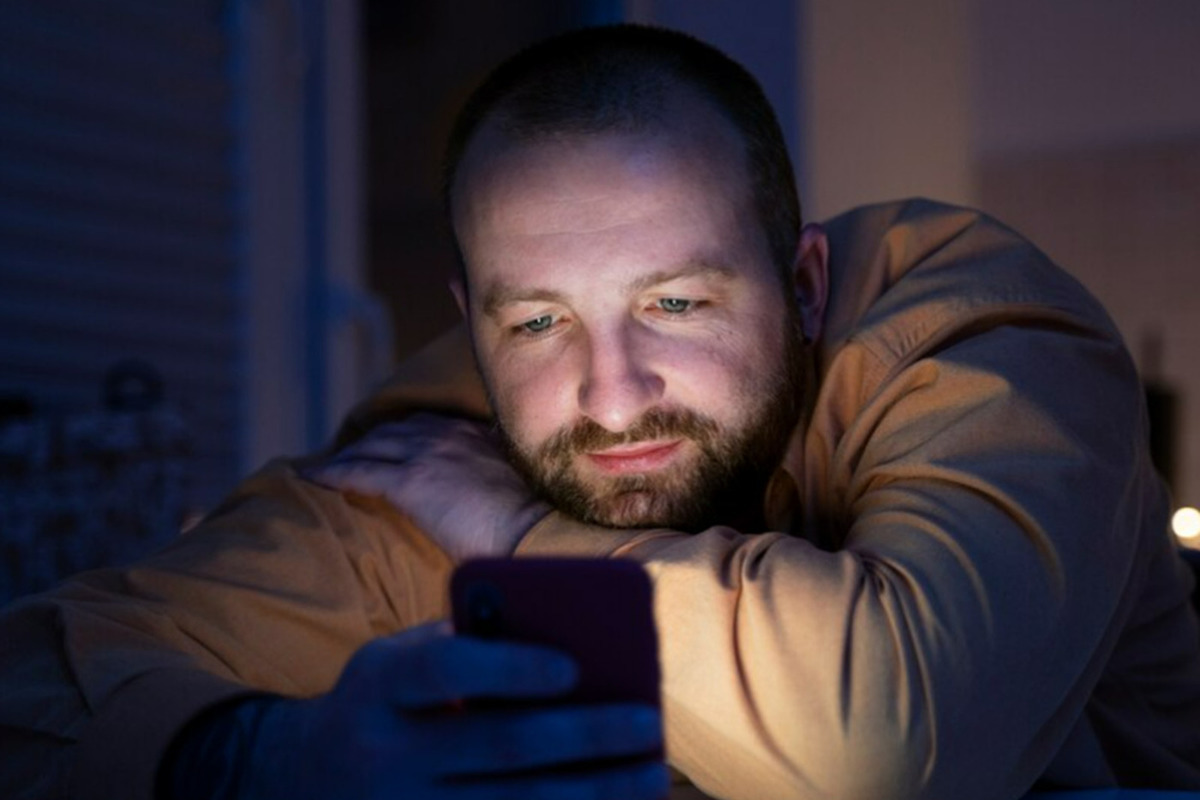Long-term exposure to light from a smartphone has been linked to the risk of developing a dangerous disease.
[ad_1]

The blue spectrum of light has been called a time bomb for human health: it threatens diabetes
Long-term exposure to harsh “blue” light emitted by smartphones and LED office lighting can be “toxic,” a study has found. Exposure to blue light throughout the day can disrupt normal body functions and throw blood sugar levels out of balance.
Scientists at University College London say today’s “red famine” environment could be a public health “ticking time bomb”, potentially causing diabetes and shortening life.
Professor Glen Jeffrey said: “In sunlight there is a balance between red and blue, but we now live in a world where blue light predominates. Although we don’t see it, LED lights are dominated by blue and almost no red. Long-term exposure to blue light is potentially toxic without red light. Blue light itself is bad for physiology and can lead to abnormal blood sugar levels, which can ultimately contribute to the development of diabetes and compromise health.”
The scientist recalled that until 1990, incandescent lamps were everywhere. They maintained a balance of blue and red light spectrum, which was close to the solar one. However, switching to LEDs could be a “potential health time bomb.”
According to Glen Jeffrey, this can be corrected by spending more time in the sun.
Researchers have found that excessive blue light destroys mitochondria, which generate the energy needed to power cells. This can affect blood sugar levels and contribute to aging.
It has also been found that shining a red light on a person’s skin for 15 minutes can return blood sugar levels to normal levels.
The researchers used red light at a wavelength of 670 nm, which is also used to treat aging, and found that it stimulated energy production in cells and increased glucose uptake.
This resulted in a 27.7% reduction in blood glucose levels, which could provide a new type of treatment for diabetes.
Dr. Michael Powner notes: “It is clear that light affects mitochondrial function, and this affects our bodies at a cellular and physiological level. Our research shows that we can use a single 15-minute exposure to red light to lower blood sugar levels after a meal. Although the study was conducted on healthy people, this may have implications for future diabetes management by reducing potentially dangerous post-meal glucose spikes in the body.”
The study, published in the Journal of Biophotonics, tracked people’s blood sugar levels while they were exposed to different frequencies of light.
Other studies have shown that blue light can negatively affect vision. Many smartphones have a “night mode” feature that slightly reduces the amount of blue light emitted.
[ad_2]
Source link








